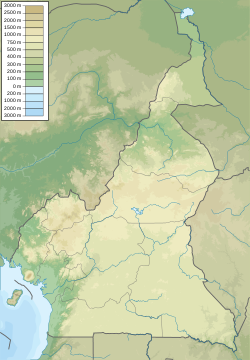| Koum Formation | |
|---|---|
| Stratigraphic range: Aptian-Albian ~ | |
| Type | Geological formation |
| Sub-units | Mbissirri Member, Grés de Gaba Member |
| Lithology | |
| Primary | Sandstone |
| Other | Claystone, siltstone, conglomerate |
| Location | |
| Coordinates | 8°18′N14°30′E / 8.3°N 14.5°E |
| Approximate paleocoordinates | 8°06′S5°00′E / 8.1°S 5.0°E |
| Region | Nord |
| Country | Cameroon |
| Extent | Koum Basin |
The Koum Formation is a geological formation in the North Province of Cameroon, western Africa.
Contents
Its strata date back to the Aptian and Albian stages of the Early Cretaceous. Dinosaur remains are among the fossils that have been recovered from the formation. [1]


